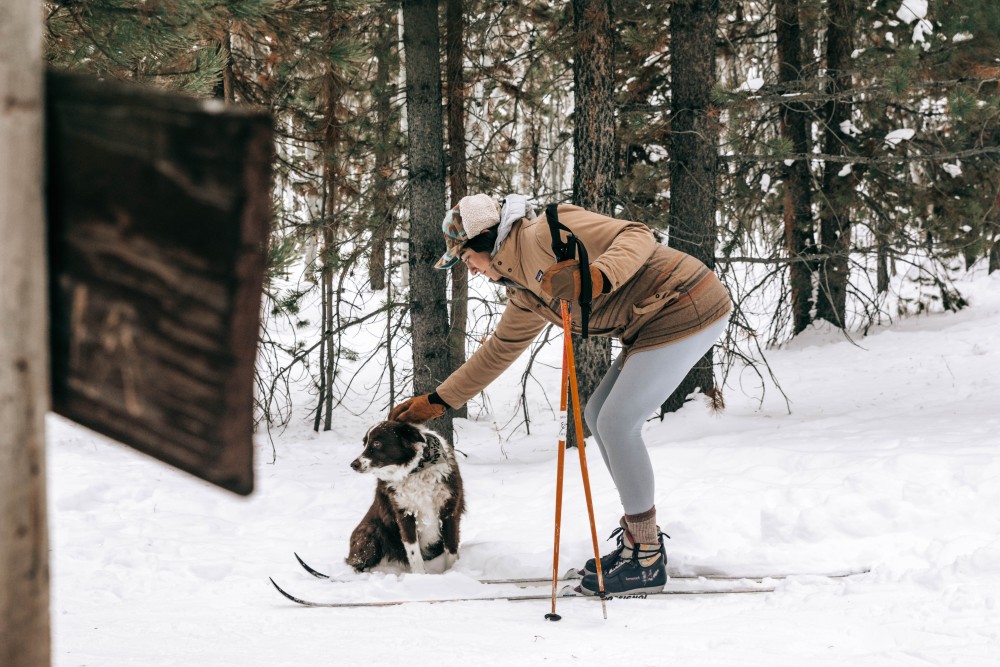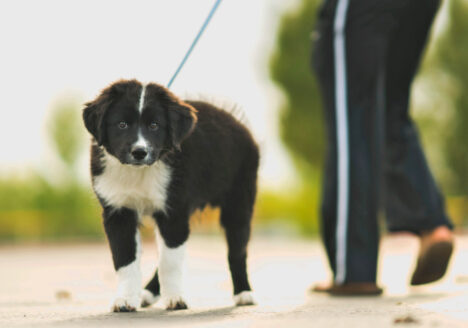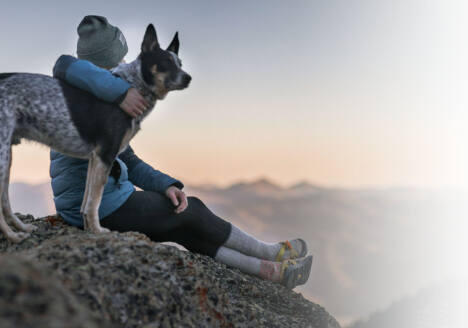Skiing or snowboarding with your dog can be a fantastic experience, but it’s crucial to prioritize their safety. Unfortunately, injuries, often deep lacerations from ski and snowboard edges, are a common occurrence.

This guide outlines how to enjoy the slopes with your furry friend while minimizing the risks.
- Assess Your Dog’s Fitness and Suitability:
- Physical Condition: Deep powder is challenging even for the most athletic dogs. Just like humans, dogs need conditioning. Start with shorter outings and gradually increase the duration. Don’t jump straight into a long backcountry tour unless your dog is already accustomed to extended physical activity.
- Breed and Size: Small dogs and those with short coats may not be well-suited for cold, snowy conditions. Consider their breed, size, and coat type before heading out.
- Age: Older dogs, even if they previously enjoyed skiing, may have slowed down and be more susceptible to injury. Be realistic about their current capabilities and avoid pushing them too hard. A 90lb dog is a lot to carry out of the mountains if they get injured or exhausted.
- Be Prepared for Emergencies:
- Carry a Pet First-Aid Kit: Be prepared to address minor injuries on the spot. A first-aid kit should include essentials like sterile bandages, antiseptic wipes, and a way to stop bleeding.
- Consider a Dog-Specific Rescue Harness: Tools like the Fido Pro Airlift can be invaluable for carrying your dog out of a challenging situation if they become injured or exhausted.
- Know Basic First Aid: Familiarize yourself with basic canine first aid, including how to control bleeding and what to do in case of a fall.
- Stay Calm: If your dog is injured, try to remain calm. Panicking will only make the situation worse. While blood on snow can look alarming, assess the injury calmly and prioritize getting your dog veterinary attention as soon as possible. Remember that even a seemingly minor cut may require stitches. Be cautious and avoid getting bitten if your dog is in pain.
- Training is Essential:
- Heel Command: Your dog must be reliably trained to stay behind you while you’re skiing or snowboarding downhill. This prevents them from getting in your path and being hit by your equipment.
- Distance Control: Teach your dog to maintain a safe distance. They shouldn’t be so close that they could be clipped by your skis or snowboard.
- Practice: Practice these commands in a controlled environment before hitting the slopes.
- Paw Protection:
- Assess Paw Sensitivity: Some dogs have sensitive paws that are prone to cracking or irritation in cold, snowy conditions.
- Consider Booties or Paw Wax: If your dog’s paws are sensitive, consider using dog booties or paw wax to protect them from the cold and ice. If you dog has sensitive paws learn how to protect them in our latest blog.


